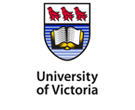Collaborative action research: A catalyst for enhancing the practice of community youth mapping.
| Title | Collaborative action research: A catalyst for enhancing the practice of community youth mapping. |
| Publication Type | Thesis |
| Year of Publication | 2008 |
| Authors | Miller G |
| Advisor | Hills M, Wharf Higgins J |
| Academic Department | School of Nursing |
| Degree | Doctor of Philosophy Ph.D. |
| Date Published | April 28, 2008 |
| University | University of Victoria (Canada) |
| City | Victoria, BC |
| Keywords | youth development, community youth mapping, collaborative action research, co-operative inquiry |
| Abstract | Using a Collaborative Action Research (CAR) approach, ten youth were involved as co-researchers in the development and implementation of a Community Youth Mapping (CYM) project in the city of Surrey, British Columbia. Youth were trained to be co-researchers, involved in: Research design, recruiting interview respondents, collecting, transcribing, and analysing data as well as developing a knowledge-transfer strategy. The research questions guiding this study were: 1. What is the experience of conducting a Collaborative Action Research (CAR) approach in the development and implementation of a Community Youth Mapping (CYM) project in order to gain an understanding of the opportunities and supports (through people, places and activities) for young people to build elements that facilitate positive youth development (PYD)? 2. What types of data are Youth Mappers able to collect using a variety of methods and technology? 3. What are the benefits to the youth participating in this study? Youth Mappers collected data from 174 of their peers through key informant interviews and focus group sessions, mapping resources in the form of people, places and activities where youth found opportunities and support to build elements that facilitate PYD and examining potential explanatory themes underlying the qualitative data. Global Positioning System (GPS) and Geographical Information System (GIS) technology were used to map locations of people, places and activities (PPA) in the different neighbourhoods within the City of Surrey. Youth Mappers reported gaining a broad array of benefits including: research, technological and communication skills, knowledge about positive youth development and changes in the way they perceived themselves as supporting youth in their community. Some additional training and organizational support may have assisted the Youth Mappers in recruitment of respondents and in data collection. The study found that youth’s primary resources for building elements that facilitate PYD were found in informal settings such as malls, restaurants, friend’s and their own homes, within the company of friends and family. Formal settings included work, schools and sport and recreation facilities with co-workers, teachers, coaches and team members. Fewer resources were reported for formal organizations. Youth are in need of more places to socialize together that are run similarly to church organizations but with non-religious affiliation, making membership more open to a diverse youth. Young people also want more opportunities to collaborate with adults within their communities on a formal and informal basis. The Surrey Community Youth Mapping project was instrumental in providing the initial foundation for a broader Community Youth Development Initiative and immediately garnered the interest of schools and organizations within the community and provincially. Recommendations were made for modifying this kind of study for different audiences. |
| URL | http://hdl.handle.net/1828/901 |


 The Social Economy Student Network
The Social Economy Student Network


